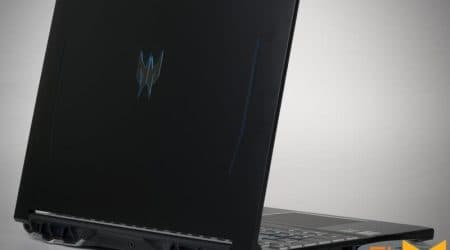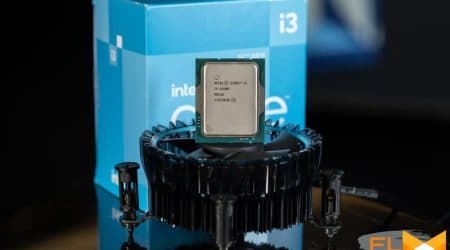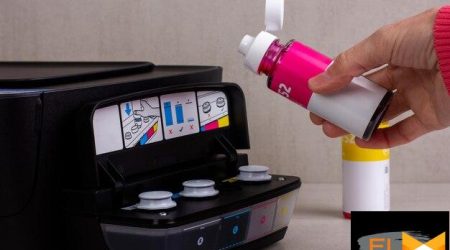In today’s digital age, we often overlook the importance of maintaining the sanitation of our essential tools. These everyday objects, which facilitate our interactions with technology, harbor a surprising amount of bacteria and dirt over time. Understanding the significance of regular upkeep not only enhances the longevity of these devices but also contributes to a healthier environment.
Ensuring that your input device remains in optimal condition requires a thoughtful approach to its maintenance. Simple yet effective measures can significantly reduce the buildup of grime and germs that accumulate during daily use. By adopting a proactive stance towards the sanitation of these tools, users will experience a more pleasant and efficient interaction with their technology.
This guide will explore various strategies for achieving a pristine state for your input tool, employing safe methods and appropriate materials. Following these recommendations will help ensure that your workspace remains tidy and inviting, fostering productivity and wellness.
Importance of Regular Keyboard Maintenance
Maintaining optimal conditions for input devices plays a crucial role in ensuring their longevity and functionality. Frequent upkeep not only contributes to the overall performance but also enhances user experience significantly.
Neglecting routine care can lead to various issues, including decreased responsiveness, sticky keys, and even failure of essential components. Accumulated dirt and debris create an environment conducive to bacteria and germs, posing health risks to users.
Regular attention to these devices can prevent potential complications, prolong their lifespan, and maintain a hygienic workspace. By investing time in upkeep, users foster a more pleasant and efficient working atmosphere, thereby promoting productivity and comfort.
Choosing the Right Cleaning Supplies
Selecting appropriate materials for maintaining hygiene is crucial for preserving the functionality and appearance of your technology. A thoughtful approach not only enhances performance but also extends the lifespan of devices. With numerous options available, it’s essential to identify those that suit your requirements while ensuring safety and effectiveness.
First and foremost, consider gentle cleaners that are free from harsh chemicals. These products limit the risk of damage to sensitive surfaces, ensuring that nothing compromises the integrity of the equipment. Additionally, microfiber cloths are excellent for application, as they attract dust and grime without leaving scratches.
Investing in isopropyl alcohol is a wise choice due to its quick evaporation rate and antimicrobial properties. This solution can be diluted appropriately, providing a reliable agent for sanitizing surfaces. Compressed air is also invaluable, assisting in the removal of debris trapped between keys, which can adversely affect performance.
Finally, be cautious about using any products with strong fragrances or harmful additives, as these can contribute to indoor air pollution and pose health risks. Opt for options labeled as non-toxic and eco-friendly whenever possible, creating a safer environment while maintaining the cleanliness of your devices.
Step-by-Step Disinfection Process
This section provides a structured approach to ensuring that the surface of vital input devices remains hygienic and free from contaminants. Following a methodical series of actions can contribute to a more sanitary environment, enhancing both functionality and health safety.
| Step | Description |
|---|---|
| 1 | Gather necessary materials such as microfiber cloths, rubbing alcohol or disinfectant wipes, and compressed air. |
| 2 | Disconnect the device to prevent any accidental key presses during the process. |
| 3 | Use compressed air to blow out crumbs and dust from between the keys, ensuring a thorough initial clean. |
| 4 | Dampen a microfiber cloth with rubbing alcohol or the preferred cleaning solution, avoiding excessive saturation. |
| 5 | Wipe down all surfaces, focusing on areas that receive frequent touch, while being careful around any openings. |
| 6 | Allow the device to air dry completely before reconnecting it to prevent any moisture related issues. |
| 7 | Reconnect the device and perform a functionality check to ensure everything operates correctly. |
Safe Methods for Removing Keycaps
Removing keycaps can be an essential step to ensure the longevity and functionality of your typing device. Understanding the techniques involved helps maintain the integrity of the components while providing access for thorough maintenance.
Gathering Necessary Tools
Before embarking on the removal process, it’s crucial to have the right tools at hand. A keycap puller is the ideal instrument, specifically designed for this purpose. If you lack this tool, a flat plastic spatula can serve as a substitute. Additionally, ensure you have a soft cloth nearby to place the keycaps on, preventing potential loss or damage.
Careful Removal Techniques
Start by gently inserting the keycap puller beneath the keycap, applying even pressure to avoid cracking the switch underneath. If using a spatula, carefully pry the keycap while ensuring not to disturb adjacent keys. Once detached, place the keycap in the designated area, taking care to keep track of its position for reassembly. Repeat this process for other keycaps as needed.
Remember: Always exercise caution to prevent harm to the keyboard’s delicate mechanisms. Following these methods will assist in maintaining optimal performance while safeguarding your device’s components.
Common Mistakes to Avoid While Cleaning
When it comes to tidying up a keyboard, individuals often overlook certain critical aspects that may lead to damage or insufficient hygiene. Recognizing and steering clear of these pitfalls can ensure a safer and more thorough outcome.
Using Incorrect Cleaning Solutions
- Avoid using harsh chemicals such as ammonia or bleach, as they can harm the surface and internal components.
- Stay away from aerosol sprays, which may introduce moisture and potentially damage sensitive parts.
- Opt for alcohol-based wipes or solutions that are specifically designed for electronic devices.
Neglecting Proper Techniques
- Do not spray cleaning solutions directly onto the keys; this can cause liquid to seep inside, leading to malfunctions.
- Refrain from using excessive force while scrubbing, as this may dislodge keys or damage them.
- Always ensure the device is powered off and unplugged before initiating any maintenance procedure.
By avoiding these common errors, you can maintain an optimal state for your keyboard, enhancing both its longevity and functionality.
Preventing Future Buildup of Germs
Maintaining a hygienic workspace is essential for minimizing the accumulation of harmful microorganisms. By adopting certain habits and strategies, you can create an environment that discourages the spread of germs, ensuring a healthier interaction with your devices.
Regularly scheduled maintenance plays a critical role in this endeavor. Setting aside time each week to address minor cleanups can help keep contaminants at bay. This maintenance might include wiping down surfaces with appropriate sanitizing agents and ensuring that food and drinks are consumed away from your equipment.
Incorporating protective accessories can also contribute significantly to reducing germ transmission. Keyboard covers or silicone skins can be effective barriers against dust and spills, while reducing the need for frequent thorough scrubbing.
Additionally, fostering personal hygiene habits is crucial. Washing hands before engagement with electronic devices and avoiding touching your face while using them can greatly limit the introduction of new germs. Encouraging those around you to follow similar practices creates a collective effort towards a cleaner space.
Finally, consider the placement of your equipment. Keeping devices in less trafficked areas can minimize exposure to airborne pathogens and reduce transfer from other surfaces. This strategic positioning, combined with proactive behaviors, helps maintain a sanitary environment for usage.
Q&A: Disinfect clean computer keyboard
How can I clean a laptop keyboard effectively without damaging it?
To clean a laptop keyboard effectively without damaging it, first turn off the laptop and unplug it. Start by turning the keyboard upside down and gently shake it to dislodge loose debris. Use a can of compressed air to blow dust and dirt from around the keys. For a deeper clean, use a cotton swab dipped in a small amount of isopropyl alcohol to clean between the keys and in hard-to-reach crevices. You can also use disinfecting wipes to clean and disinfect the surface of the keys. Make sure the keyboard is completely dry before turning the laptop back on.
What’s the best way to clean and disinfect your keyboard?
The best way to clean and disinfect your keyboard is to first unplug it or remove the batteries if it’s a wireless model. Turn the keyboard upside down and give it a good shake to remove loose debris. Use a can of compressed air to blow out any dust and dirt underneath the keys. To disinfect, use a cloth or cotton swab with a small amount of isopropyl alcohol, or use disinfecting wipes to wipe down each key thoroughly. Avoid using too much liquid, as it could damage the electronics. For a mechanical keyboard, consider removing the keycaps for a deeper clean.
How often should you clean your computer keyboard and why?
You should clean your computer keyboard at least once a month to prevent the buildup of dust, dirt, and bacteria. Regular cleaning helps maintain the keyboard’s functionality and ensures a more hygienic workspace. To effectively clean your keyboard, follow a routine of shaking it upside down to remove debris, using a can of compressed air to clear dust, and wiping it down with disinfecting wipes or a cotton swab dipped in alcohol. If you use your computer frequently or share it with others, more frequent cleaning may be necessary to keep germs and bacteria at bay.
What tools can you use to deep clean a mechanical keyboard?
To deep clean a mechanical keyboard, start by unplugging it and removing the keycaps using a keycap puller. Shake the keyboard upside down to remove any loose debris and use a can of compressed air to blow out dust from around the switches. A small toothbrush can help clean the sides of the keys and any hard-to-reach spots. For disinfecting, use a cloth or a cotton swab dipped in a small amount of isopropyl alcohol to wipe down the switches and keyboard back. Let all components completely dry before reassembling the keyboard. Cleaning slime or gel can also be used to pick up dirt from the keyboard surface.
How can I clean a computer keyboard thoroughly without damaging it?
To clean a computer keyboard thoroughly without damaging it, start by unplugging the keyboard or turning off your laptop. Turn the keyboard upside down and gently shake it to remove loose dust and debris. For a deeper clean, use cleaning gel to pick up dirt from the surface and between the keys. If you want to clean under the keys, carefully pop the keys off using a keycap puller or small tool, and then use a microfiber cloth with a small amount of alcohol to clean the keyboard. Make sure to allow everything to completely dry before reassembling the keyboard.
What’s the best way to clean a keyboard and keep it free of dust and debris?
The best way to clean a keyboard and keep it free of dust and debris is to establish a regular cleaning routine. Start by turning the keyboard upside down and shaking it gently to dislodge any particles. Use compressed air to blow away dust stuck between the keys. For a more detailed cleaning, use a microfiber cloth with a small amount of alcohol to wipe the entire keyboard. Avoid using soapy water directly on the keyboard, as it could damage the electronics. Incorporating a regular routine with these methods for cleaning will help maintain a clean keyboard.
How often should I clean my keyboard, and why is it important?
You should clean your keyboard regularly, ideally once a week, to prevent the buildup of dust, dirt, and germs. Frequent cleaning helps keep your keyboard clean and ensures it functions well over time. If you use your computer often or eat near the keyboard, you may need to clean it more frequently. To maintain a clean keyboard, follow a cleaning routine that includes turning it upside down to shake out loose debris, using a microfiber cloth with alcohol to disinfect, and removing the keys for a more thorough clean every few months.
What tools and methods are recommended for cleaning a dirty keyboard?
To clean a dirty keyboard, gather the following tools: a microfiber cloth, alcohol, compressed air, and cleaning gel. Start by turning the keyboard upside down and gently shaking it to remove loose debris. Use compressed air to blow out dust from between the keys. For cleaning under the keys, you may need to remove the keys with a keycap puller and use a microfiber cloth with a small amount of alcohol for disinfecting. If you prefer not to remove the keys, cleaning gel can be used to clean around them effectively.





